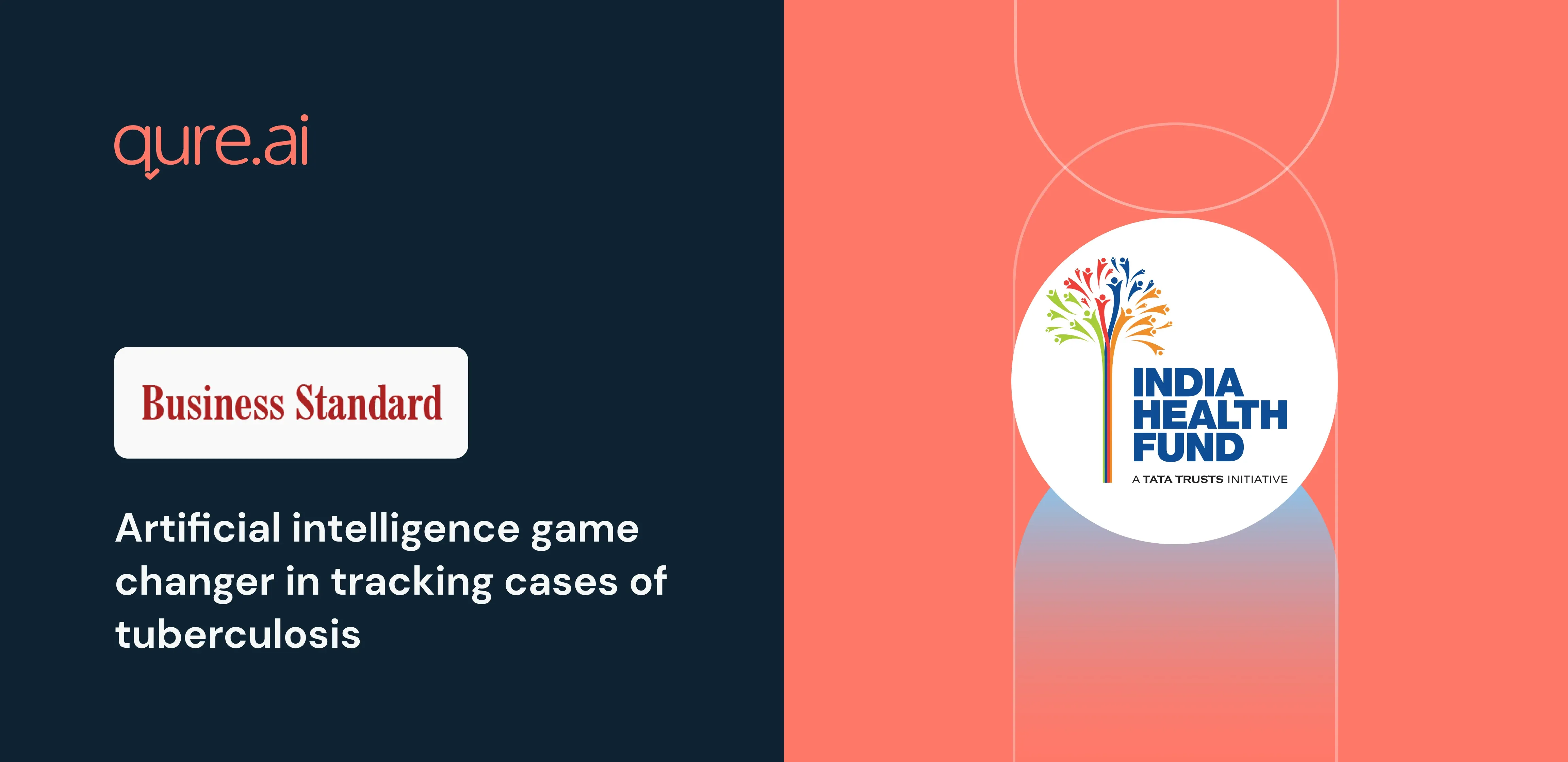Artificial intelligence (AI) algorithm-based tuberculosis (TB) screening is leading to a jump in notifications and helping identify 30-40 per cent more incidental cases that would have been left undiagnosed in India, a country with a large share of the worldwide burden of the infectious disease.
Back
Mumbai-based startup Qure.ai, which provides AI-based solutions for medical imaging and diagnostics, and India Health Fund (IHF) have deployed qXR, a tool for TB screening, across 139 health facilities in India since February 2020. Qure.ai has screened 120,031 individuals so far.
IHF, a not-for-profit organisation, was set up as a collaborative initiative of Tata Trusts and The Global Fund to Fight AIDS, Tuberculosis and Malaria.
“We realised there were not enough radiologists who could read the X-rays in a lot of remote sites. We brought in AI to automatically read a chest X-ray. To detect TB on a chest X-ray one can actually depend on an algorithm to read it, without needing a radiologist,” Prashant Warier, chief executive officer (CEO) and co-founder of Qure.ai, told Business Standard.
qXR was one of the three AI algorithms that the World Health Organization had referenced to in its March 2021 TB screening guidelines.
Warrier explained that one can use AI to immediately interpret an X-ray scan and get diagnosed the same day rather than wait for a report.
“Notifications have increased substantially with the help of AI. Lost and follow-up cases are minimised. By the time results are ready, we lose many patients as some travel long distances as well. The notifications have increased by 30-40 per cent if we see data from Mumbai, or places in Rajasthan,” he said.
Madhav Joshi, CEO of IHF, cites the Municipal Corporation of Greater Mumbai’s (MCGM) example as a game changer.
“It started with analysing X-rays of patients who had come for TB tests. Then it was extended to patients who were seeking other treatments as well. Now, MCGM is getting about 20 per cent of their cases from those who had not come for TB diagnosis or treatment,” Joshi said, pointing out that Mumbai has a high TB load.
Incidental findings, too, have increased.
About 35 percent of TB findings are now incidental in MCGM. Around 40 percent of TB cases are estimated to be asymptomatic. MCGM accelerated its efforts to eliminate TB by conducting case finding of asymptomatic or subclinical TB patients using AI-aided chest X-ray-based surveillance in peripheral hospitals.
Through this, over 100,000 individuals have been screened till date across seven MCGM hospitals.
Based on an analysis of a representative sample of over 1,000 patients screened across four hospitals, out of which 141 were confirmed as TB cases, it was found that 35 per cent them (50 out of 141) came from non-TB pathways such as orthopaedic, gynaecology, pre-surgical chest X-rays and casualty. There is also one mobile screening van catering to 24 wards within Mumbai city. Around 26 per cent of the patients flagged as TB presumptive by AI were confirmed cases.
Around 64 per cent of the patients (out of those who provided residence information) were urban slum-dwellers. Peripheral hospitals observed a 12 per cent increase in TB notifications compared to previous years, Qure.ai said.
The project has touched lives in remote parts of the country, too. In Mon, Nagaland, qXR-enabled TB screening has cut down time to get results.
James Tinenlo, district TB officer in Mon, said, “Owing to the lack of trained radiologists, we had to go for teleconsultation or consult other doctors earlier. But this AI tool has helped in reducing the time to get results.” He added that when internet connectivity is good, the results are known in a minute; even otherwise the results take only around 3 minutes.
Qure.ai says that with the introduction of qXR, TB notifications have improved across three hospitals in Chhattisgarh (District Hospital Dantewada, and Community Health Centres in Bhanupratappur and Chhindgarh). “Overall, positive notifications from these hospitals increased by over 100 per cent between 2022 and 2023, within a span of months from August to December. Around 14 per cent of the identified positive cases were asymptomatic, where patients showed no discernible TB symptoms upon arrival at the hospital,” Qure.ai.
In Bellary, Karnataka, district TB officer Indrani Vokuda pointed out that between November 2022 and April 2023 around 752 chest X-rays were uploaded, of which 480 were abnormal, and 382 were sent for sputum sampling. Around 75 positive cases were detected among them, indicating 21 per cent positivity.
